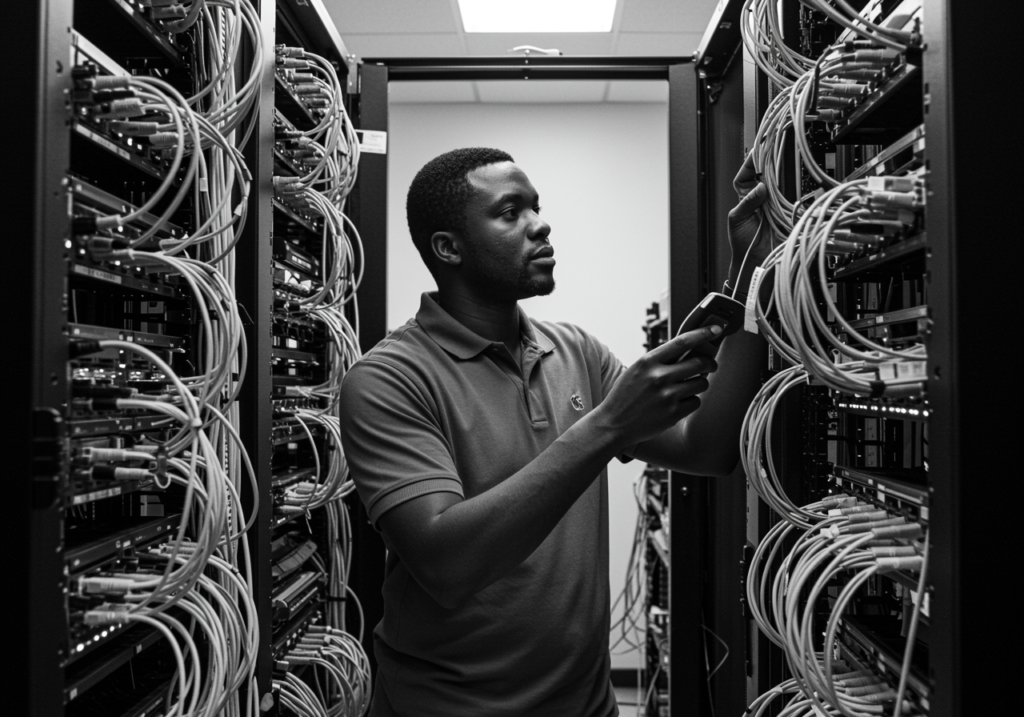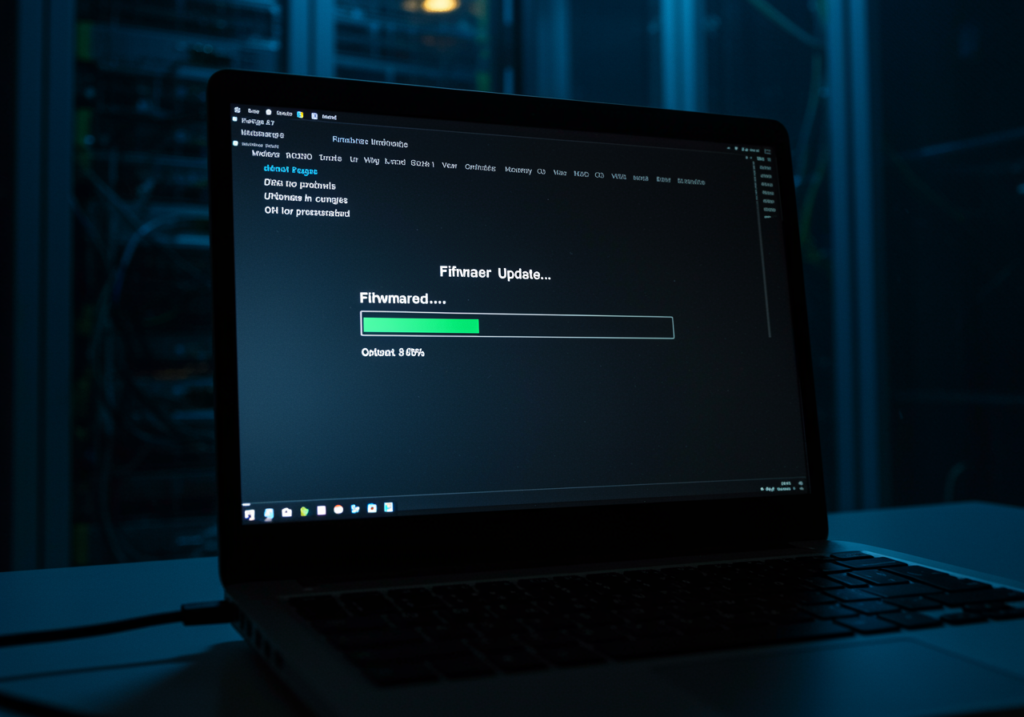The core of operations in the modern, fast-paced digital business world is your network. Performing a network health check guarantees that your IT infrastructure operates effectively, safely, and without expensive disruptions. Proactive network monitoring and maintenance may protect your company against downtime, security breaches, and performance bottlenecks, regardless of how big or small your firm is.
To sustain optimal network performance in 2025 and beyond, follow these seven crucial measures.
1. Assess Current Network Performance

It’s crucial to fully comprehend the state of your network before making any improvements to your IT infrastructure. Start by carrying out comprehensive network speed testing to ascertain the available capacity and its effective utilization. Keep a close eye on latency, packet loss, and jitter since these measures frequently indicate the root reasons of sluggish response times and erratic connections. Particularly for companies that depend on cloud-based apps or real-time communication tools, even little delays can have a big effect on output.
Next, assess the functionality and state of your network’s hardware, such as firewalls, switches, and routers. Unexpected downtime, security flaws, and bottlenecks might result from outdated firmware or incorrect setups. A crucial step in preserving optimal performance is making sure your devices are updated and set up in accordance with best practices.
Use enterprise-grade monitoring solutions like Caretech, PRTG or SolarWinds for the most accurate findings. These solutions monitor performance patterns, offer real-time statistics, and notify you of any problems before they become more serious. You’ll be in a better position to make decisions that maintain the optimal performance of your IT infrastructure if you have a clear baseline for your network’s present performance.
2. Check Network Security Measures

Speed is not the only need for a good network; security from any attacks is also essential. Network health depends on cybersecurity, and even the most effective infrastructure can become inoperable if it is left vulnerable to intrusions. To start, make sure your intrusion prevention systems and firewall rules are set up to restrict unwanted access without interfering with lawful traffic. Inadequate or out-of-date regulations might lead to hazardous gaps that expose your company.
Updating anti-malware and antivirus software is equally crucial. Every day, new threats appear, and antiquated security solutions may not be able to identify and neutralise them in time. Frequent updates guarantee that your systems can recognise and remove the most recent versions of malware, ransomware, and other harmful software before they do any harm.
One of the most neglected yet important components of network security is password security. All user accounts should have strong, one-of-a-kind passwords, and WPA3 for wireless networks should be used in favour of antiquated encryption techniques. Attackers frequently use outdated encryption standards and weak credentials as entry points.
Plan frequent penetration testing, at least twice a year for a more proactive strategy. By simulating actual attack situations, our procedure finds weaknesses before malevolent actors can take advantage of them. By quickly fixing these flaws, you can fortify your defenses and guarantee that your network will continue to operate at peak efficiency without being disrupted by security breaches.
3. Monitor Hardware and Device Health

The reliability of your IT infrastructure is directly proportional to the state of its hardware. A single failing switch, router, or server can interrupt operations and cause substantial downtime. Hardware performance must be monitored on a regular basis in order to keep the network reliable and safe.
Conduct routine inspections of all physical components, paying special attention to cables that exhibit symptoms of wear, fraying, or loose connections, which can cause data transmission failures and periodic outages. Check that cooling systems in server rooms are working properly to avoid overheating, which is one of the leading causes of premature hardware failure.
Examine the performance of critical equipment such as servers, switches, and access points to determine which are obsolete or underperforming. Consistently sluggish or unreliable hardware can cause network bottlenecks, lower productivity, and expose vulnerabilities. Replacing such devices at the appropriate time provides constant performance while lowering long-term maintenance expenses.
Keeping a complete IT asset inventory is essential for proactive management. This should include the device’s age, performance metrics, warranty coverage, and service history, allowing you to plan upgrades, manage warranties, and schedule replacements before issues develop.
By maintaining excellent hardware condition, you reinforce the foundation of your IT infrastructure, reduce interruptions, and guarantee that the network runs at top performance.
CLICK BUTTON TO GET OUR FREE NETWORK HEALTH AUDIT CHECKLIST
4. Evaluate Network Traffic Patterns

A thorough understanding of network traffic flow is critical for sustaining peak performance and ensuring safe operations. By analyzing traffic patterns, you may find bottlenecks, inefficiencies, and take actions to improve your network’s performance and dependability. Continuous monitoring of application bandwidth utilization enables you to spot misuse, such as non-business activities that consume precious resources, and fix these issues before they impact productivity.
Detailed traffic monitoring also allows you to identify individual devices or endpoints that are consuming too much bandwidth, which might cause poorer network performance for other users. Addressing these high-demand sources helps to balance resource allocation and guarantees equitable usage throughout the network.
Equally crucial is the capacity to detect anomalous traffic surges. Sudden increases in network traffic might signal a security risk, such as a Distributed Denial-of-Service (DDoS) assault or unauthorized data transfers. Rapid identification of these anomalies enables prompt investigation and resolution, lowering the risk of breaches or extended outage.
Implementing traffic shaping and Quality of Service (QoS) setups guarantees that business-critical applications are prioritized over less important traffic. This smart distribution of bandwidth helps to sustain performance where it is most needed, supporting critical activities and improving user experience. Your network will stay efficient and secure as long as traffic patterns are consistently evaluated.
5. Review Software and Firmware Updates

Keeping software and firmware up to date is crucial for reducing security flaws and ensuring optimal network performance. Outdated systems expose your infrastructure to cyber attacks while also causing compatibility concerns and operational slowdowns. Regularly scheduling updates for network management tools, operating systems, and linked devices ensures that all components have the most recent features, bug fixes, and security improvements.
Patching vulnerabilities should be considered a top priority. The longer a defect goes untreated, the higher the chance of exploitation. Establishing a method for speedy deployment of important patches protects sensitive data and ensures compliance with security requirements.
Before rolling out upgrades throughout the whole network, they must be thoroughly tested in a controlled staging environment. This process identifies possible conflicts or disturbances, ensuring that integration runs smoothly and without unexpected downtime.
Wherever feasible, automate the updating process to reduce the possibility of human mistake or missed updates. Automation assures consistency, increases productivity, and shortens the time needed to keep your systems safe and optimised. By following a rigorous strategy to software and firmware upgrades, you may improve the resilience, dependability, and overall performance of your network infrastructure.
6. Backup and Disaster Recovery Planning

A robust network recovers fast from failures, hacks, or unforeseen disturbances. Effective backup and disaster recovery planning ensures that vital data is secure, accessible, and recoverable under all conditions. Automated backups should be set up to collect critical files, settings, and databases on a consistent basis, reducing the chance of data loss.
Backups must be kept in various locations to ensure optimal protection, including on-site storage for quick recovery and off-site or cloud-based solutions for redundancy in the case of physical damage or localised outages. This tiered strategy protects against a wide range of hazards, including hardware failures and natural calamities.
An untested catastrophe recovery strategy is as dangerous as having no plan at all. Conducting regular simulations, at least once a year, helps confirm that recovery methods are efficient, dependable, and in line with business continuity goals.
Using both cloud backups and local storage allows you to restore data rapidly while guaranteeing long-term resilience. By combining automated procedures, various storage options, and frequent testing, you can build a strong safety net that keeps your network running and your organisation secure even in the face of interruption.
7. Schedule Regular Network Health Checks

Network health is a long-term commitment to stability, performance, and security. Regular evaluations assist in identifying possible issues before they develop, ensuring that systems stay optimised and aligned with operational requirements. Setting a regular timetable for complete IT infrastructure reviews, whether quarterly or biannually, provides for the early discovery of vulnerabilities, performance bottlenecks, and out-of-date configurations.
Each evaluation should provide complete documentation on network modifications, upgrades, and enhancements. This record not only promotes responsibility, but it also gives useful information for future troubleshooting and planning. Keeping IT workers up to date on the latest network management methods ensures that they can successfully address emerging risks, implement new technologies, and adhere to industry best practices.
Collaboration with a managed IT services provider like Caretech Solutions can improve the scope and accuracy of these health assessments. Such collaborations enable access to sophisticated diagnostics, professional oversight, and proactive maintenance tactics, which improve overall network resilience and reduce downtime. Consistent monitoring and deliberate upgrades lead to a network infrastructure that is safe, efficient, and ready for future demands.
Our Final Thoughts
A network health check is not just about fixing problems, it’s about preventing them. By following these seven steps, your business can enjoy faster speeds, better security, and improved reliability in your IT infrastructure. In a competitive digital world, a healthy network is your strongest advantage.


